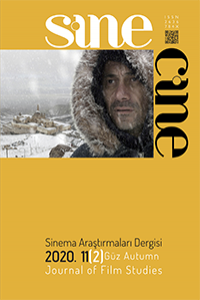
The People’s Houses’ Educational Cinema Repertoire traces the initiative of the Republican People’s Party (CHP) to show educational/instructional and propagandistic films at People’s Houses in an effort to promote Kemalist ideology during the years between 1923 and 1945. The starting point of the article is historical, tracing the development of state-directed cinema in People’s Houses in 1932. The newsreels, travelogues, actualities, educational/instructional films, and other types of documentaries were mostly CHP productions or rentals. The article makes two important claims: first that the political and official elite sought to target particular adults for (i) the construction of a national identity, (ii) the legitimization of political leaders, and (iii) the strengthening and spreading of Kemalist ideology. In this context, People’s Houses developed into an “ideological state apparatus” in order to impose the dominant political ideology on “concrete individuals as subjects,” as described by Louis Althusser. Second, People’s Houses became a new kind of public space, outside of private cinemas. The article establishes an historical framework by comparing the cinemas, films, and audiences of Turkey with those in other locations. The historical narration is composed of quantitative and qualitative samples taken from the archives. Aside from the compilation of government records, decrees, correspondence, and reports, a number of films are examined. Neither the reception of their audiences nor the technical aspects of post-production are considered, however.

| Benzer Makaleler | Yazar | # |
|---|
| Makale | Yazar | # |
|---|